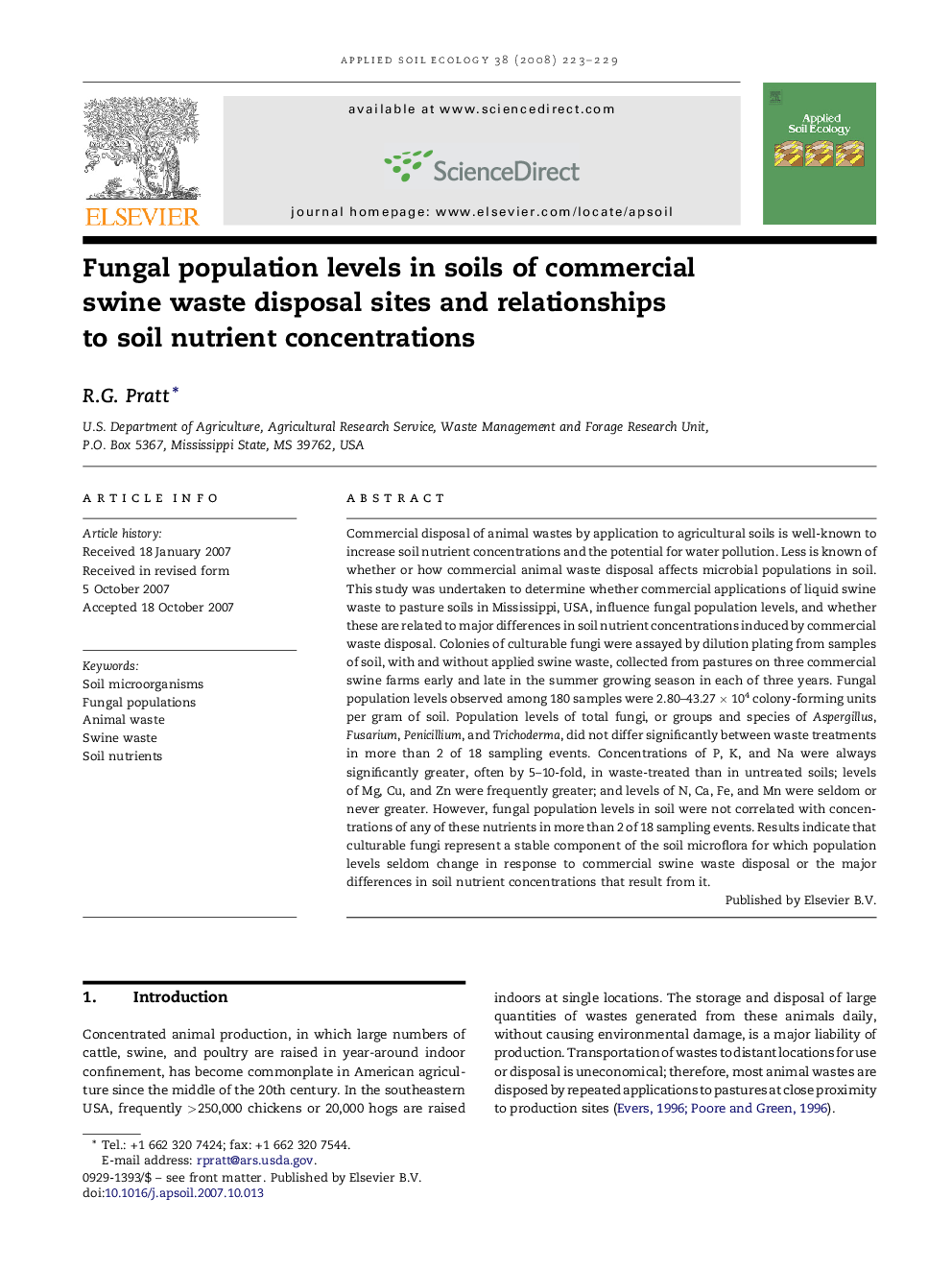| Article ID | Journal | Published Year | Pages | File Type |
|---|---|---|---|---|
| 4383292 | Applied Soil Ecology | 2008 | 7 Pages |
Commercial disposal of animal wastes by application to agricultural soils is well-known to increase soil nutrient concentrations and the potential for water pollution. Less is known of whether or how commercial animal waste disposal affects microbial populations in soil. This study was undertaken to determine whether commercial applications of liquid swine waste to pasture soils in Mississippi, USA, influence fungal population levels, and whether these are related to major differences in soil nutrient concentrations induced by commercial waste disposal. Colonies of culturable fungi were assayed by dilution plating from samples of soil, with and without applied swine waste, collected from pastures on three commercial swine farms early and late in the summer growing season in each of three years. Fungal population levels observed among 180 samples were 2.80–43.27 × 104 colony-forming units per gram of soil. Population levels of total fungi, or groups and species of Aspergillus, Fusarium, Penicillium, and Trichoderma, did not differ significantly between waste treatments in more than 2 of 18 sampling events. Concentrations of P, K, and Na were always significantly greater, often by 5–10-fold, in waste-treated than in untreated soils; levels of Mg, Cu, and Zn were frequently greater; and levels of N, Ca, Fe, and Mn were seldom or never greater. However, fungal population levels in soil were not correlated with concentrations of any of these nutrients in more than 2 of 18 sampling events. Results indicate that culturable fungi represent a stable component of the soil microflora for which population levels seldom change in response to commercial swine waste disposal or the major differences in soil nutrient concentrations that result from it.
